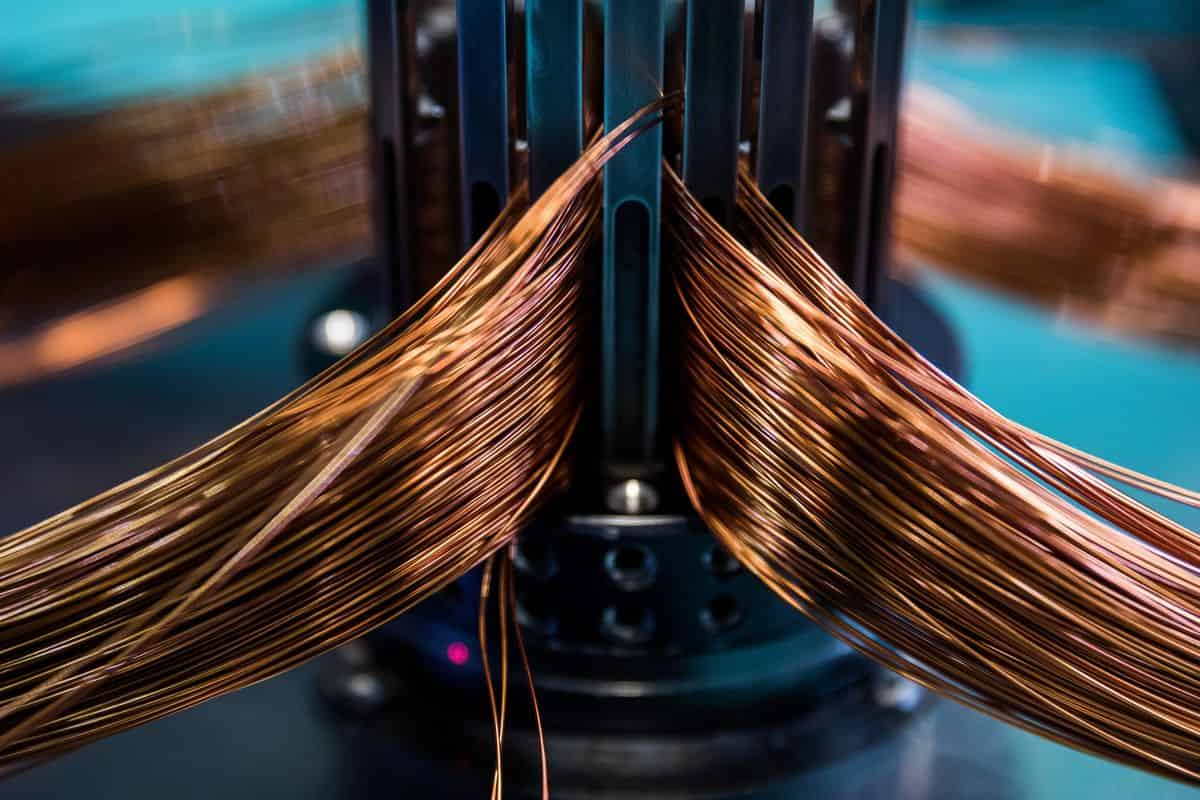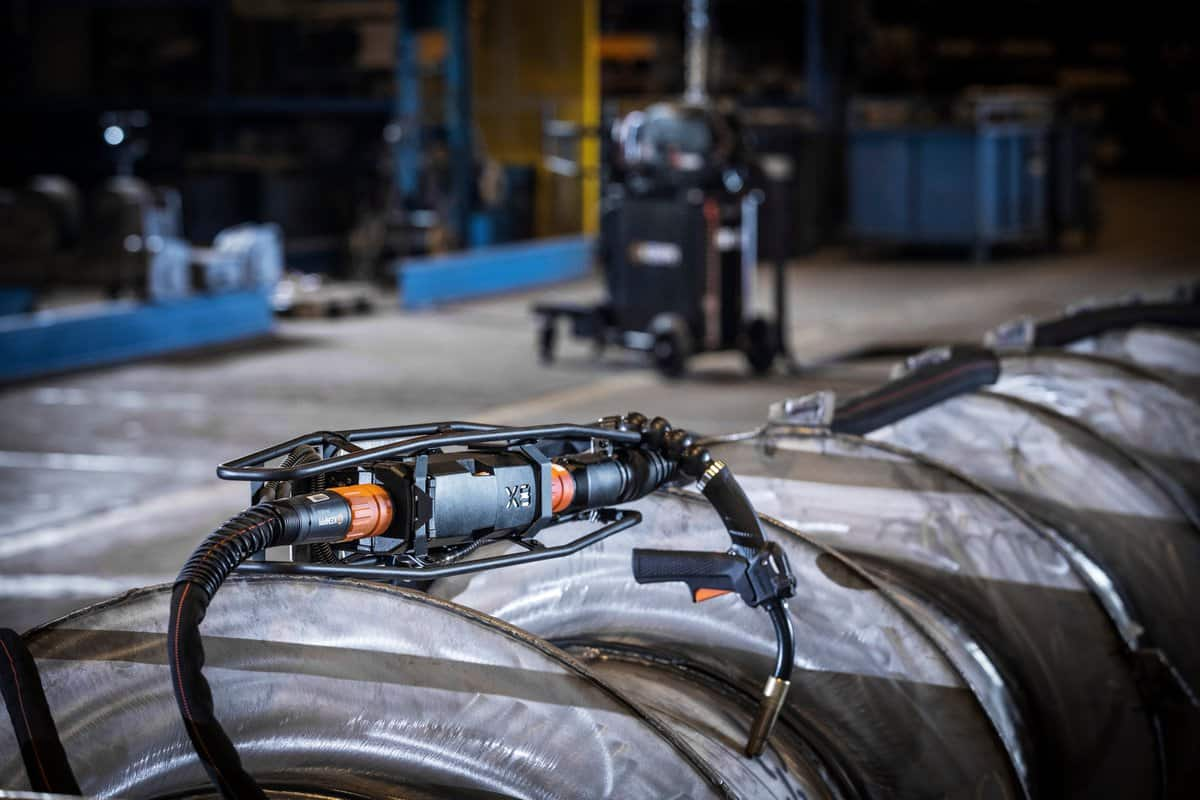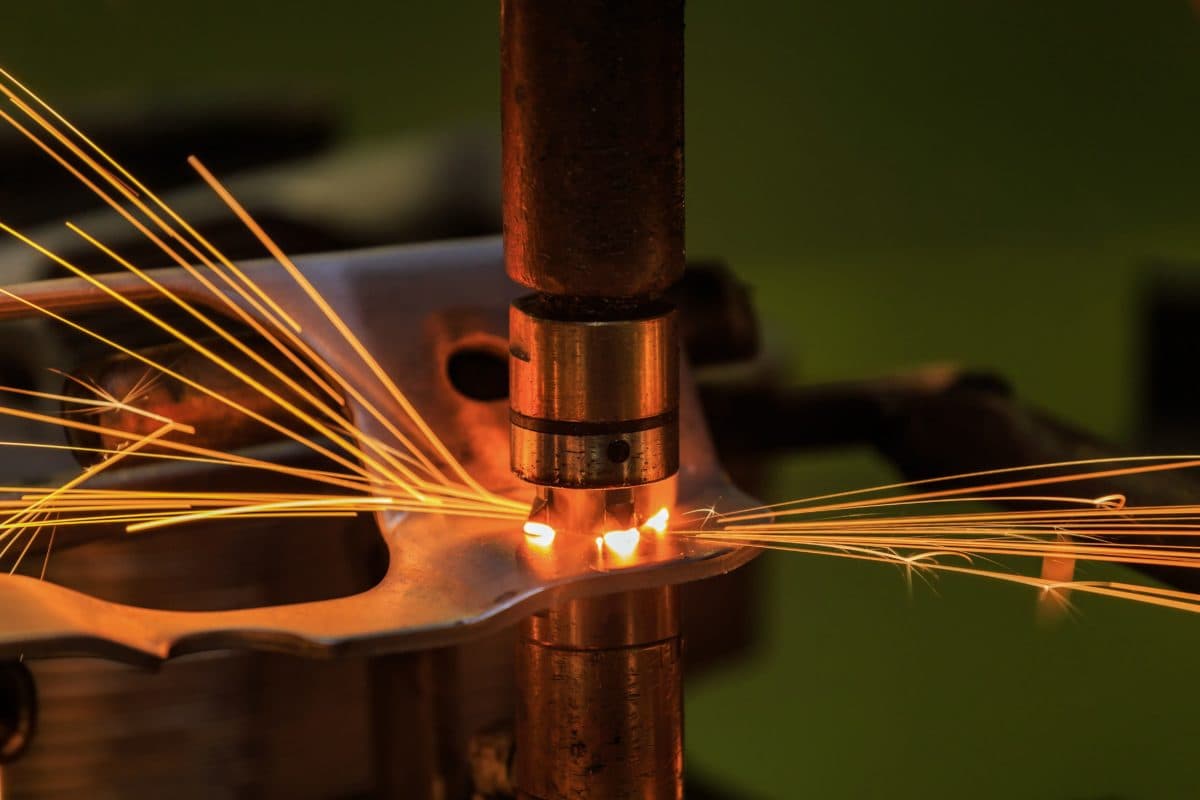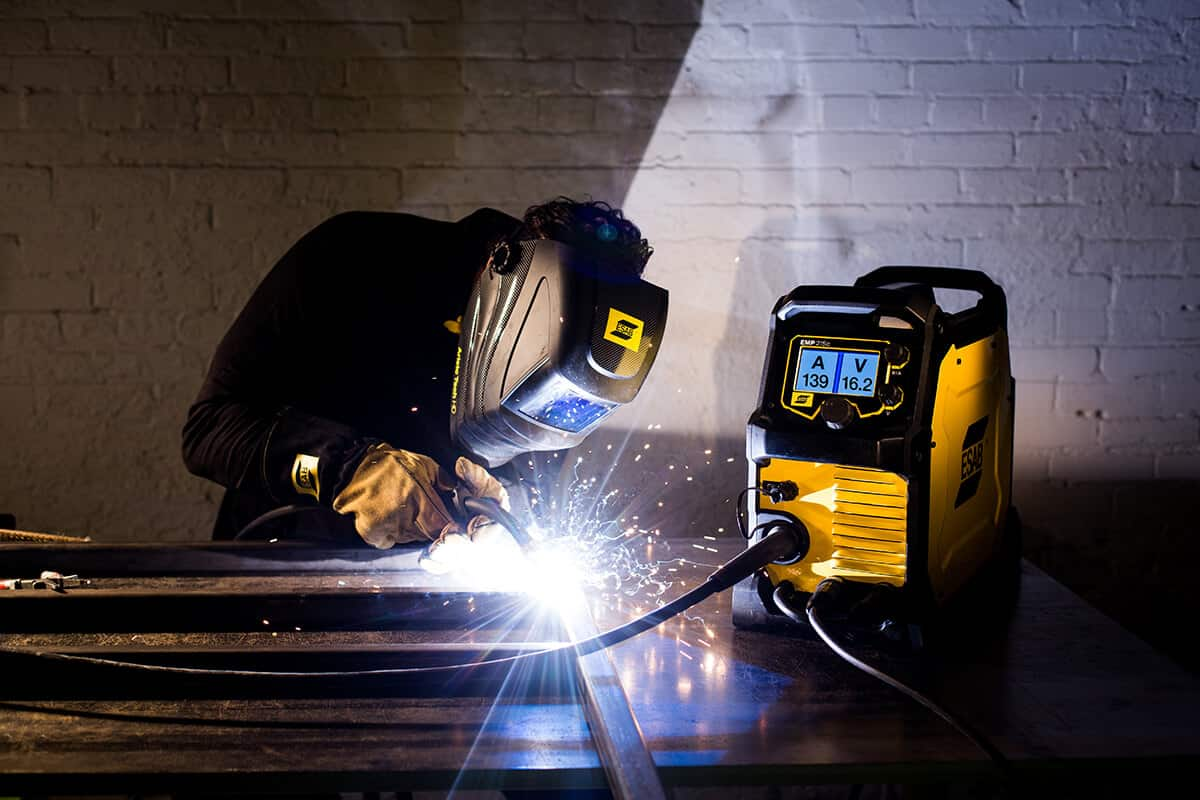MIG method of welding has many uses and its wire consists of an electrode wound onto a spool that is passed through a MIG welding "gun" and heated to melt metal and attach workpieces together. This process is known as "MIG welding." Doesn't it sound straightforward enough? However, it's not quite as simple as that. This article will discuss some of the distinctions that can be made between the various types of MIG welding wire, as well as the factors that should be taken into account when selecting welding wire and the significance of purchasing wire that is of high quality. There are many types of MIG welding method wire. The flux-cored MIG welding wire and the solid MIG welding wire are the two basic varieties of MIG welding wire. The term "flux compound" refers to the substance that can be found inside an electrode that is known as flux-core wire. When the wire melts and combines with the welding arc, this creates a gas that shields the weld from oxygen, which is known to induce flaws in the weld if it is allowed to interact with it. This indicates that shielding gas is not necessary for the usage of this type of wire; nevertheless, there are situations in which shielding gas may be used in conjunction with flux-core wire in order to achieve an even higher level of protection. Solid wire electrodes, on the other hand, are exactly what they sound like: big spools of solid metal wire that do not contain any flux. These electrodes are used in the welding process.  This indicates that they must be utilized in conjunction with shielding gas. The ratio of 75% argon to 25% carbon dioxide is the most often used shielding gas. A constant stream of gas is released from a container by the welding gun into a region that surrounds the electrode and the weld area. This helps to prevent oxidation and other flaws in the weld. Both the solid and flux-core varieties of MIG welding wire can be manufactured from a wide number of materials depending on the purpose. Some of these materials include aluminum, stainless steel, copper, and silver, to name just a few. Are you curious about the factors you ought to take into consideration while selecting MIG welding wire? Neither variety is preferable to the other; rather, which one is best for you depends on the specifics of your circumstance as well as your personal tastes. When selecting MIG welding wire, there are a few things that you need to bear in mind, and here they are. To achieve the level of cleanliness in the weld that is desired, it is best to utilize solid MIG welding wires in conjunction with shielding gases. This will provide a cleaner weld with significantly less spatter than using flux-cored wire. Spatter does not necessarily affect the quality of the weld, but it can require additional grinding, polishing, and finishing to remove it before painting or other surface preparations, which is why the solid wire is more commonly used in these kinds of situations. Spatter also does not necessarily affect the quality of the weld. The substance of the workpiece requires a specific kind of wire, which can only be obtained by trial and error. Wire with the designation ER70S-3 is typically put to use with rust-free and oil-free mild steel, while wire with the designation ER70S-6 contains a deoxidizer and is typically put to use with mild steel that is contaminated with corrosion or mill scale.
This indicates that they must be utilized in conjunction with shielding gas. The ratio of 75% argon to 25% carbon dioxide is the most often used shielding gas. A constant stream of gas is released from a container by the welding gun into a region that surrounds the electrode and the weld area. This helps to prevent oxidation and other flaws in the weld. Both the solid and flux-core varieties of MIG welding wire can be manufactured from a wide number of materials depending on the purpose. Some of these materials include aluminum, stainless steel, copper, and silver, to name just a few. Are you curious about the factors you ought to take into consideration while selecting MIG welding wire? Neither variety is preferable to the other; rather, which one is best for you depends on the specifics of your circumstance as well as your personal tastes. When selecting MIG welding wire, there are a few things that you need to bear in mind, and here they are. To achieve the level of cleanliness in the weld that is desired, it is best to utilize solid MIG welding wires in conjunction with shielding gases. This will provide a cleaner weld with significantly less spatter than using flux-cored wire. Spatter does not necessarily affect the quality of the weld, but it can require additional grinding, polishing, and finishing to remove it before painting or other surface preparations, which is why the solid wire is more commonly used in these kinds of situations. Spatter also does not necessarily affect the quality of the weld. The substance of the workpiece requires a specific kind of wire, which can only be obtained by trial and error. Wire with the designation ER70S-3 is typically put to use with rust-free and oil-free mild steel, while wire with the designation ER70S-6 contains a deoxidizer and is typically put to use with mild steel that is contaminated with corrosion or mill scale.  Environment — Flux-core wire is typically the superior choice when working in settings that are particularly windy or otherwise demanding. In windy conditions, the gas that is used to shield solid MIG welding wire may be blown away, resulting in a weld that is of a lower quality unless a windscreen is utilized. Because the flux-core wire is made up of gases that are released when it is heated, the metal is protected more effectively when the conditions are as described above. The thickness of the wire is important, and as a general rule, it is advised to use thicker wire for thicker workpieces. Wire with a diameter of.35 inches is the industry standard for most welds, although it is possible that it will not be sufficient for exceptionally thick pieces of metal. In order to produce a robust joint, it may be necessary to make multiple passes. The power of the welding unit is closely connected to the thickness of the wire. A MIG welding equipment may accept a greater range of thicknesses provided that its voltage and power levels are increased. When working with MIG welding devices that have a lower power output, it is not a good idea to use a thicker wire. Due to the decreased total amperage and output, it is possible that the workpieces may not melt correctly, which will prevent the creation of a quality weld. Always refer to the manufacturer's instructions in order to determine the maximum wire thickness that is recommended. When purchasing MIG welding wire, you should always be sure to invest in a high-quality wire no matter which type of MIG welding wire you choose to purchase. Quality MIG wire is more forgiving than welding wire of lower quality; it may create a more sound weld even in situations that are less-than-perfect; and yet, the cost of quality MIG wire still only accounts for a portion of the total cost of welding.
Environment — Flux-core wire is typically the superior choice when working in settings that are particularly windy or otherwise demanding. In windy conditions, the gas that is used to shield solid MIG welding wire may be blown away, resulting in a weld that is of a lower quality unless a windscreen is utilized. Because the flux-core wire is made up of gases that are released when it is heated, the metal is protected more effectively when the conditions are as described above. The thickness of the wire is important, and as a general rule, it is advised to use thicker wire for thicker workpieces. Wire with a diameter of.35 inches is the industry standard for most welds, although it is possible that it will not be sufficient for exceptionally thick pieces of metal. In order to produce a robust joint, it may be necessary to make multiple passes. The power of the welding unit is closely connected to the thickness of the wire. A MIG welding equipment may accept a greater range of thicknesses provided that its voltage and power levels are increased. When working with MIG welding devices that have a lower power output, it is not a good idea to use a thicker wire. Due to the decreased total amperage and output, it is possible that the workpieces may not melt correctly, which will prevent the creation of a quality weld. Always refer to the manufacturer's instructions in order to determine the maximum wire thickness that is recommended. When purchasing MIG welding wire, you should always be sure to invest in a high-quality wire no matter which type of MIG welding wire you choose to purchase. Quality MIG wire is more forgiving than welding wire of lower quality; it may create a more sound weld even in situations that are less-than-perfect; and yet, the cost of quality MIG wire still only accounts for a portion of the total cost of welding. 
MIG wire
In the MIG method of welding, we use a welding wire like other welding methods. In the process known as Gas Metal Arc Welding (GMAW), neither a stick electrode nor a filler rod will be utilized. In its place, a spool of metal wire provides all that is required to successfully deposit a weld. When performing this type of welding, which is more often referred to as MIG, the shielding is provided by a gas tank (usually filled with CO2 or argon), all the while the wire is melting into the base metal. At this point in time, it is the method that is utilized most frequently for structural welding and product fabrication. When a welder pulls the trigger on his MIG gun (which is depicted below), a wire feed machine pushes the wire so that it comes out via a brass nozzle. This makes it possible to achieve pinpoint accuracy and to see what's going on inside the joint without any obstructions. When compared to welding with SMAW, welding out of position is a lot simpler. Because the spool can hold approximately one mile's worth of wire, you won't have to pause as frequently to reload it with new material. (In case you were wondering, "metal inert gas" is what the acronym MIG stands for. However, given that CO2 and O2 are reactive gases, it is more accurate to refer to these gases as MAG, which stands for metal active gas, whenever they are used.  In the GMAW process, there are two consumables that need to be taken into consideration: the gas, and the wire. In the same way that there is a classification system for the many choices of stick electrodes, there is also a classification system for the various options of MIG wire that are maintained by the American Welding Society. Another organization, the American Society of Mechanical Engineers, also has a code, however, it is extremely similar to the one described above. AWS A5.18 is the code that is used to describe solid steel wire by AWS. The last decision you'll need to make when purchasing MIG wire concerns the amount of wire you need and the packaging it will come in. The choice of which alternative to go with will undoubtedly be determined by the wire feed mechanism on the welding equipment. (The spool used in a tiny, non-industrial MIG machine is far smaller than the one seen in the image below.) Additionally, "TIG cut lengths" are an option when ordering MIG wire. This is a reference to the strands that are three feet in length that are used in TIG welding. In this particular instance, diameter numbers are not presented in decimal form but rather as standard TIG rod diameters, such as 1/16 or 3/32. If a MIG welder uses "cored" wire, they are able to weld without using a tank of CO2 or argon gas and weld without gas. This is due to the fact that the wire core consists of components that provide the function of protecting the weld pool.
In the GMAW process, there are two consumables that need to be taken into consideration: the gas, and the wire. In the same way that there is a classification system for the many choices of stick electrodes, there is also a classification system for the various options of MIG wire that are maintained by the American Welding Society. Another organization, the American Society of Mechanical Engineers, also has a code, however, it is extremely similar to the one described above. AWS A5.18 is the code that is used to describe solid steel wire by AWS. The last decision you'll need to make when purchasing MIG wire concerns the amount of wire you need and the packaging it will come in. The choice of which alternative to go with will undoubtedly be determined by the wire feed mechanism on the welding equipment. (The spool used in a tiny, non-industrial MIG machine is far smaller than the one seen in the image below.) Additionally, "TIG cut lengths" are an option when ordering MIG wire. This is a reference to the strands that are three feet in length that are used in TIG welding. In this particular instance, diameter numbers are not presented in decimal form but rather as standard TIG rod diameters, such as 1/16 or 3/32. If a MIG welder uses "cored" wire, they are able to weld without using a tank of CO2 or argon gas and weld without gas. This is due to the fact that the wire core consists of components that provide the function of protecting the weld pool.  The core acts as a substitute for the tank of shielding gas, much like the coatings on the stick rods. When welding outside, where even a little breeze can be enough to disperse a compressed gas, this is a very valuable piece of information to have. Flux-Cored Arc Welding is the proper name for this method of welding (FCAW). A welder is also able to use greater amperages and larger diameter wires when working with flux-cored wire as opposed to solid wire. Outside, structural welding is one of the most common applications for the technology. You won't have to deal with tanks of gas or wait for the wind to quiet down before you can weld if you use cored wire instead of solid MIG wire. However, the cost of cored wire is substantially higher. Despite the fact that it contains shielding additives, flux-cored wire is thin enough to be expelled from a MIG gun. And the amount of slag that is produced by those components is only a small portion of what is produced by the SMAW process. Thankfully, the MIG solid wire code and the AWS standard for carbon steel flux-cored wire, which is known as AWS A5.20, only differ significantly from one another. In the case of all flux-cored wires, the number begins with an E, which stands for electrode, rather than the more common ER. And in place of an S, which indicates a solid wire, you will either see a T, which indicates a tubular wire, or a C, which indicates a "composite" wire. One example of a flux-cored wire that can be used for a variety of purposes is designated as E70C-6.
The core acts as a substitute for the tank of shielding gas, much like the coatings on the stick rods. When welding outside, where even a little breeze can be enough to disperse a compressed gas, this is a very valuable piece of information to have. Flux-Cored Arc Welding is the proper name for this method of welding (FCAW). A welder is also able to use greater amperages and larger diameter wires when working with flux-cored wire as opposed to solid wire. Outside, structural welding is one of the most common applications for the technology. You won't have to deal with tanks of gas or wait for the wind to quiet down before you can weld if you use cored wire instead of solid MIG wire. However, the cost of cored wire is substantially higher. Despite the fact that it contains shielding additives, flux-cored wire is thin enough to be expelled from a MIG gun. And the amount of slag that is produced by those components is only a small portion of what is produced by the SMAW process. Thankfully, the MIG solid wire code and the AWS standard for carbon steel flux-cored wire, which is known as AWS A5.20, only differ significantly from one another. In the case of all flux-cored wires, the number begins with an E, which stands for electrode, rather than the more common ER. And in place of an S, which indicates a solid wire, you will either see a T, which indicates a tubular wire, or a C, which indicates a "composite" wire. One example of a flux-cored wire that can be used for a variety of purposes is designated as E70C-6.  In the categorization system, the number 7 refers to the tensile strength multiplied by 10,000. (Instead of 1000 if there is the case of a non-cored MIG wire). The welding position is indicated by the number 0. (If the number is 0, it indicates that the wire should only be used for horizontal or flat welding.) Lincoln Electric's Inner shield 232, also known as NR-232, is a flux-cored wire that complies with AWS E71T-8. This wire is one of the flux-cored wires that is utilized in building construction the most. The value 1 indicates that the wire can be utilized in any of the places. The number 8 denotes low hydrogen, which brings to mind the common stick electrode, which is denoted by the number E7018. Popularity can be attributed to the fact that the chemical composition of NR-232 satisfies the seismic standards for regions prone to earthquakes, such as California. On the other hand, working with this wire is more challenging than working with wires that do not have the same level of seismic toughness as this wire. The recommended values for NR-232 can be found in the chart that follows. The fact that "NR" when spoken sounds like "inner" make it an easy acronym to keep in mind.
In the categorization system, the number 7 refers to the tensile strength multiplied by 10,000. (Instead of 1000 if there is the case of a non-cored MIG wire). The welding position is indicated by the number 0. (If the number is 0, it indicates that the wire should only be used for horizontal or flat welding.) Lincoln Electric's Inner shield 232, also known as NR-232, is a flux-cored wire that complies with AWS E71T-8. This wire is one of the flux-cored wires that is utilized in building construction the most. The value 1 indicates that the wire can be utilized in any of the places. The number 8 denotes low hydrogen, which brings to mind the common stick electrode, which is denoted by the number E7018. Popularity can be attributed to the fact that the chemical composition of NR-232 satisfies the seismic standards for regions prone to earthquakes, such as California. On the other hand, working with this wire is more challenging than working with wires that do not have the same level of seismic toughness as this wire. The recommended values for NR-232 can be found in the chart that follows. The fact that "NR" when spoken sounds like "inner" make it an easy acronym to keep in mind.  It is a good idea to concentrate on the rod classes that are used the most at first and learn the rest of the armory throughout the course of time. Having said that, if you are just starting out as a welder, you can find yourself in the position of having to restock consumables or repair empty spools on MIG machines used by more experienced welders. Therefore, before beginning a welding operation, it is vital to exercise due care by correctly selecting and storing wire materials. Failing to do so can result in expensive blunders. It is possible to acquire handbooks published by the American Welding Society; however, the cost may be prohibitive for some. Our brand manufactures various forms of consumable welding wires, fluxes, and pilot arcs. We are trying to fulfill the needs of various types of wire and welding flux and downstream enrichment and manufacture of other welding wire, welding flux, and other consumables with plans to expand the factory and the number of our customers, As much as feasible.
It is a good idea to concentrate on the rod classes that are used the most at first and learn the rest of the armory throughout the course of time. Having said that, if you are just starting out as a welder, you can find yourself in the position of having to restock consumables or repair empty spools on MIG machines used by more experienced welders. Therefore, before beginning a welding operation, it is vital to exercise due care by correctly selecting and storing wire materials. Failing to do so can result in expensive blunders. It is possible to acquire handbooks published by the American Welding Society; however, the cost may be prohibitive for some. Our brand manufactures various forms of consumable welding wires, fluxes, and pilot arcs. We are trying to fulfill the needs of various types of wire and welding flux and downstream enrichment and manufacture of other welding wire, welding flux, and other consumables with plans to expand the factory and the number of our customers, As much as feasible.
